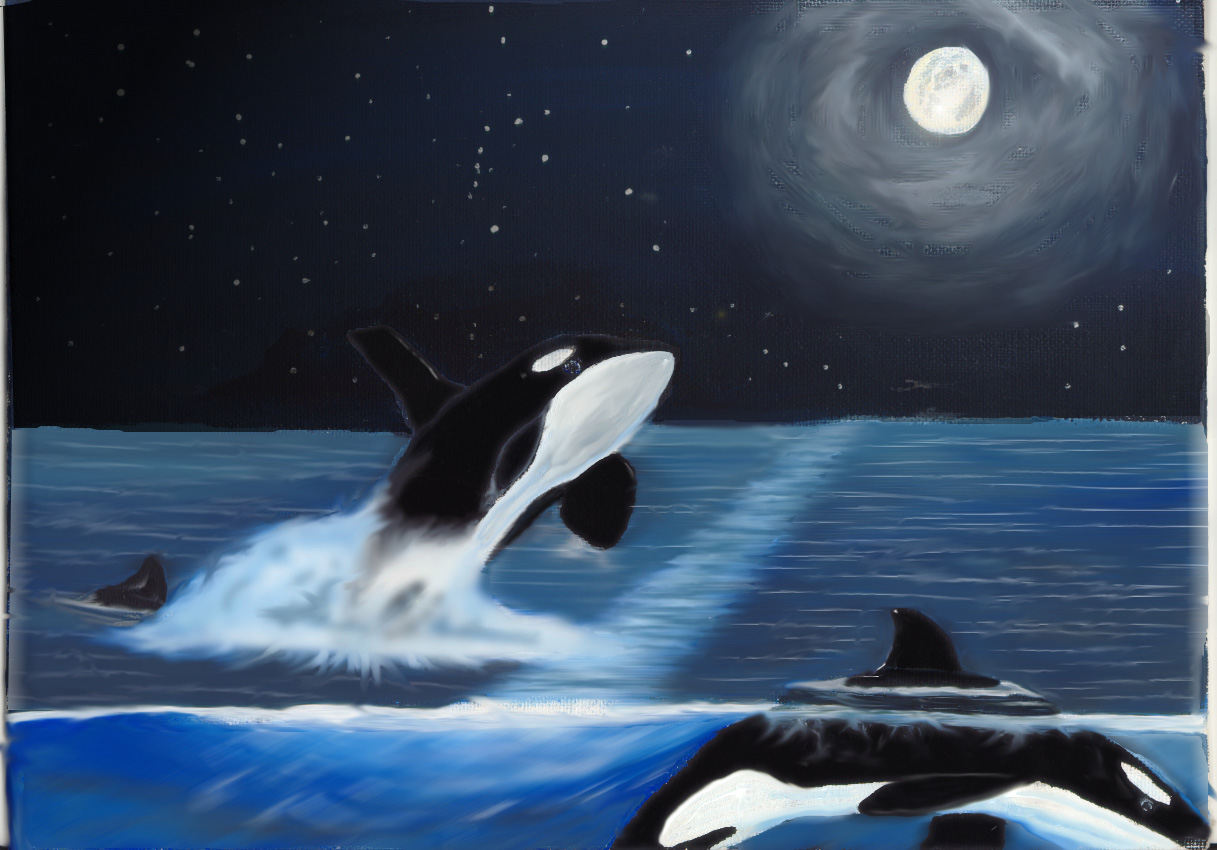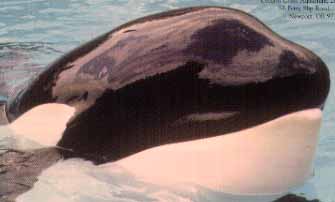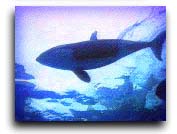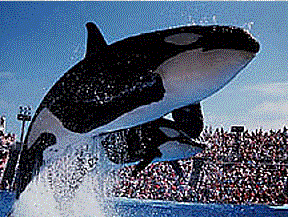 .
.
Killer Whales
1.What is your animal?
Our animal is a Killer Whale. .2. What scientific name and classification is your animal? It is an Orcinus orca3. Describe the
physical features of your animal?
The
killer whale is the largest member of the dolphin family. 2. Killer whales live in all the
oceans of the world. They're most abundant in the Arctic and Antarctic, and areas of
cold-water upwelling, where the nutrient-rich water is full of marine life. Here killer
whales feast on fishes, seabirds, seals, sea lions, and other marine mammals. 3.
Researchers have been studying the population dynamics of killer whale pods. They can
identify individuals by taking pictures of the whales' dorsal fins, noting differences in
shape, relative size, scars, and deformities. Although the worldwide population is
unknown, we do know that killer whales are not endangered. In fact, in some areas of the
Antarctic alone, their numbers are estimated at 180,000 .
.
Killer whales are among the fastest swimming marine mammals. They can swim as fast as 48 pH (30 mph), but they usually cruise at much slower speeds, about 3-10 pH (2-6 mph). The killer whale is a type of dolphin and it eats whales if it is very hungry.


4.In which oceans of the world does your creature live in?
From the North Pole to the South Pole from the Indian Ocean to the Atlantic, killer whales are found in all oceans of the world. When they come around the southern hemispheres they don’t eat.
5.What is the diet of your animal?
How do you get a name like "killer whale?" Killer whales are one of the top predators in the sea. As a group, killer whales are known to eat fish, squid, seals, sea lions, penguins, and even other whales. But, keep in mind, it would be difficult for a killer whale off the coast of California to eat a penguin. Killer whales eat the food (or prey) that's available to them. For example, a killer whale that lives in the northern Pacific can hunt harbor seals, California sea lions, and a variety of fish. A killer whale in the Antarctic could find wedded seals, leopard seals, and penguins! Researchers studying killer whales in the Pacific Northwest have found that some pods feed primarily on fish and others seem to prefer marine mammals. 6.What special animal behavior does your creature show? Killer whales live in-groups called pods. A pod may have less than 5 to about 30 individuals: a mix of males, females, and calves of varying ages. Sometimes several smaller pods join together to form larger herds of 50 or more whales7.How dose your creature reproduce and care for it’s young? Killer whale calves are born either tail-first or headfirst. Gestation is about 17 months. Calves are born throughout the year. Based on limited data collected from populations at sea, a female may bear a calf every five years. Calves are born in the water. Deliveries can be either tail-first or headfirst. The umbilical cord snaps during or soon after delivery. The calf is about 8-ft. (2.4m) long and weighs about 300 to 400 lb. (131-181 kg). The light areas of some young killer whales may be creamy white to lemon yellow rather than white. This color usually turns white by the age of one year. In the first few days after birth, the dorsal fin and tail flukes gradually stiffen8.What special senses does your creature have?9. In clued general information? Females can reach lengths up to 24 feet and weigh between 3,000 to 8,000 lb. Males can reach lengths up to 27 feet and can weigh up to 12,000 lb. There is a famous killer whale called Keiko here is some info on it: Keiko, the killer whale star of Free Willy and Free Willy II, moved into his brand-new home at the Oregon Coast Aquarium in January. The $7.3 million facility began construction at the aquarium in February 1995. It is nearly four times as large as Keiko's former pool at the Mexico City amusement park. The aquarium deliberated over its decision to accept Keiko and the new rehabilitation facility until it was satisfied that the facility would offer visitors a unique educational opportunity. Attendance at the aquarium has been setting new records ever since Keiko arrived. His rehabilitation has proceeding well. Killer whales stun seals by lobbing them into air with their tail flukes, force sea lions under water until they drown, and throw themselves over other whales' blow holes presumably to keep them from breathing. Consummate predators, killer whales are the tigers of the seas.

By Sarah Coghlan
Made at hallett Cove South Primary School
date made was 4th of August 1998.
Year 5
E-mail adress: fifth@hcsp.schools.edu.au
